Why do I need a bridge?
A bridge is a replacement tooth or teeth that fill the space where one or more teeth are missing. The bridge restores your bite and helps keep the natural shape of your face.
Before you get a bridge, your dentist wants you to know more about the steps involved. He or she can advise which type of bridge is best for you.
Why Do I Need a Bridge?
A missing tooth is a serious matter. Teeth are made to work together. When you lose a tooth, the nearby teeth may tilt or drift into the empty space. The teeth in the opposite jaw may also shift up or down toward the space. This can affect your bite and place more stress on your teeth and jaw joints, possibly causing pain.
Teeth that have tipped or drifted are also harder to clean. This puts them at a higher risk for tooth decay and gum disease.
When a tooth is missing, the bone may shrink. If that happens, it may change the way the jawbone supports the lips and cheeks. Over time, this can make your face look older.
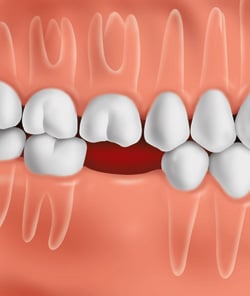
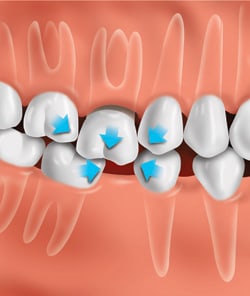
How Do I Replace a Tooth?
Placing a bridge usually takes more than one dental visit. On the first visit, your dentist prepares the teeth on both sides of the gap. He or she will later attach the bridge to these teeth.
Your dentist then takes an impression or an image of your teeth and the space and sends it to a dental laboratory. Technicians at the lab make the bridge. Your dentist will place a temporary bridge to protect your prepared teeth while you are waiting for the permanent bridge.
When the permanent bridge is ready, the dentist fits, adjusts and cements the bridge to the prepared teeth. This type of bridge is permanent and cannot be taken out of your mouth without a dentist’s help.
Fixed Bridge Placement




Do I Need Implants?
Dental implants may be used to support a bridge when several teeth are missing. Implants are posts that are surgically placed into the jaw. Over time, the bone grows around the implants to hold them in place.
- A key benefit of implants is that they don’t need support from the surrounding teeth.
- Candidates for dental implants should be in good general health and have enough bone to support an implant. For some patients, implants help preserve the jawbone where teeth have been lost.
- Implants may be placed in one day or might require multiple visits depending on your dentist’s treatment plan.
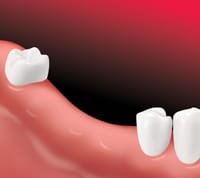
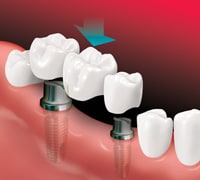
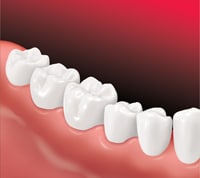
What Materials Are Used in a Bridge?
Bridges are made from metal, ceramics (porcelain) or a combination of the two. Ceramics often are bonded to a metal alloy. Your dentist will talk with you about the materials that are best for you and your mouth.
Caring for Your Bridge
A bridge can fail if the support teeth or the jawbone is damaged by dental disease. Follow these tips for good oral health:
- Brush your teeth twice a day and floss or use another between-the-teeth cleaner once a day. Brushing and cleaning between the teeth helps remove plaque, a sticky film of bacteria that is always forming on the teeth.
- See your dentist regularly for exams and professional cleanings.
- Eat a healthy diet.
Our Vision
We are dedicated to providing the highest level of service and quality to our patient community by cultivating strong relationships, communicating thoughtful treatment solutions, and providing an enjoyable atmosphere, we can empower our patients to take ownership of their oral health.
We are committed to researching and offering state-of-the-art dental solutions in order to deliver the most advanced treatment options to our patients.


